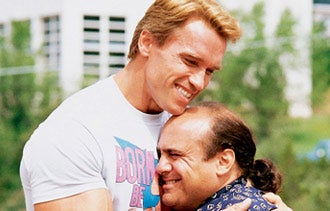Advances in 3D printing technology could revolutionise the way we produce goods and repatriate manufacturing jobs to the UK.
Additive manufacturing, as the process is technically known, works by
building up solid objects layer by wafer-thin layer, in much the same
way as a conventional 2D inkjet printer.
The object is scanned, or designed on computer modelling software,
then sliced up, like a loaf of bread, into thousands of tiny layers,
which can then be printed out to form a solid three-dimensional product.
If the last industrial revolution brought us mass production and the
advent of economies of scale - the digital revolution could bring
manufacturing back full circle - to an era of mass personalisation, and a
return to individual craft.
Dr Phil Reeves, managing director of Econolyst, an additive
manufacturing consultancy, explained: "The ability to mass-personalise
products and produce individual products for individual consumers opens
up an enormous opportunity, it almost takes us back to a craft industry
where things were made for individuals.
"And then we moved into the domain of mass production and everything
was the same - now we're using digital tools but to make individual
products.
"At the moment we're 3D printing hearing aids, hip implants, we're
starting to see consumer goods and personal products - toys - being
personalised to the individual consumer, and that in itself has benefits
to the environment because people are keeping the product for longer,
and it has more value to the consumer."
Professor Richard Hague, director of the EPSRC Centre for Additive
Manufacturing, demonstrated the technology to Sky News in his lab.
First, he printed a scale Ford Model T - the design that became synonymous with mass production in the early 20th Century.
Henry Ford famously joked that customers could have it in any colour they liked, so long as it was black.
3D printing means every design can be slightly different - without the need to re-tool, or redesign the production line.
The inkjet-style printer lays down a fine layer or light-reactive
plastic, which is immediately set into place by a beam of light passing
overhead.
The tray supporting the model then lowers slightly to allow the next layer to be added on, set into place, and so on.
Professor Hague explained: "So what we have here is a prototype Model
T Ford being printed using a 3D-printing technique that is actually
very similar to your conventional 2D inkjet printer that everyone has at
home these days.
"What we do is add a third dimension and print the part out - we take
the 3D cad model, chop it into a bunch of slices and print those one on
top of each other."
But he stressed this is what they can do now - what is exciting is
what they are working on for the future: the design freedom and the
prospect of printing multi-material components, complete with working
electronics.
In other words, they are no longer just talking about printing the
case for your mobile phone - they want, ultimately, to print the working
phone.
Professor Hague said: "The future research area we are working on is
the printing of complex biological, conductive, or optical interconnects
within the body of the part - so effectively what we're trying to do
now is move away from conventional single material additive
manufacturing, to really multi-functional additive manufacturing where
we're printing the whole system."
The technology also means you can make each object to order - rather than having to mass produce.
In a small unit in east London, MakieLab are making individually-customised dolls.
You might expect them to be made on a vast production line in the Far
East, but 3D printing makes it possible to manufacture the dolls in the
UK.
Founder Alice Taylor explained: "Instead of having to make a mould
and then make millions of the same thing in order to pay off the price
of the mould and the manufacture, you can make individual objects one by
one."
"It means that a start-up in London can make toys in London now,
whereas two or three years ago that would have been impossible."
3D printing in the future could be used to make lighter aircraft,
better body armour, one day perhaps even working body parts - the
possibilities of 3D printing are only as limited as our imagination.
SOURCE: www.yahoo.com



 “The Mercedes-Benz Sprinter Crew Van with our company’s modern
graphics and logo speaks to that sense of quality and sophistication
that The Memphis Group is all about.”
“The Mercedes-Benz Sprinter Crew Van with our company’s modern
graphics and logo speaks to that sense of quality and sophistication
that The Memphis Group is all about.”

 It
often takes a special type of person -- and personality -- to lead a
startup to soaring success. Take Apple co-founder Steve Jobs and
Facebook's Mark Zuckerberg as prime examples. Each started a tech
company that not only left their marks on Silicon Valley, but have
created products that have changed the lives of millions of people.
It
often takes a special type of person -- and personality -- to lead a
startup to soaring success. Take Apple co-founder Steve Jobs and
Facebook's Mark Zuckerberg as prime examples. Each started a tech
company that not only left their marks on Silicon Valley, but have
created products that have changed the lives of millions of people.

 Will
Allen didn't set out to become a food industry revolutionary -- he just
wanted to open a roadside stand to sell fresh produce from his small
hobby farm.
Will
Allen didn't set out to become a food industry revolutionary -- he just
wanted to open a roadside stand to sell fresh produce from his small
hobby farm.
 2. Every morning he fishes at a pond by his farm.
"I do the catch-and-release thing," Allen says. "Fishing and farming
were two of the things my father passed on to me. I know how to take
care of myself, and I'm pretty self-sufficient."
2. Every morning he fishes at a pond by his farm.
"I do the catch-and-release thing," Allen says. "Fishing and farming
were two of the things my father passed on to me. I know how to take
care of myself, and I'm pretty self-sufficient."




